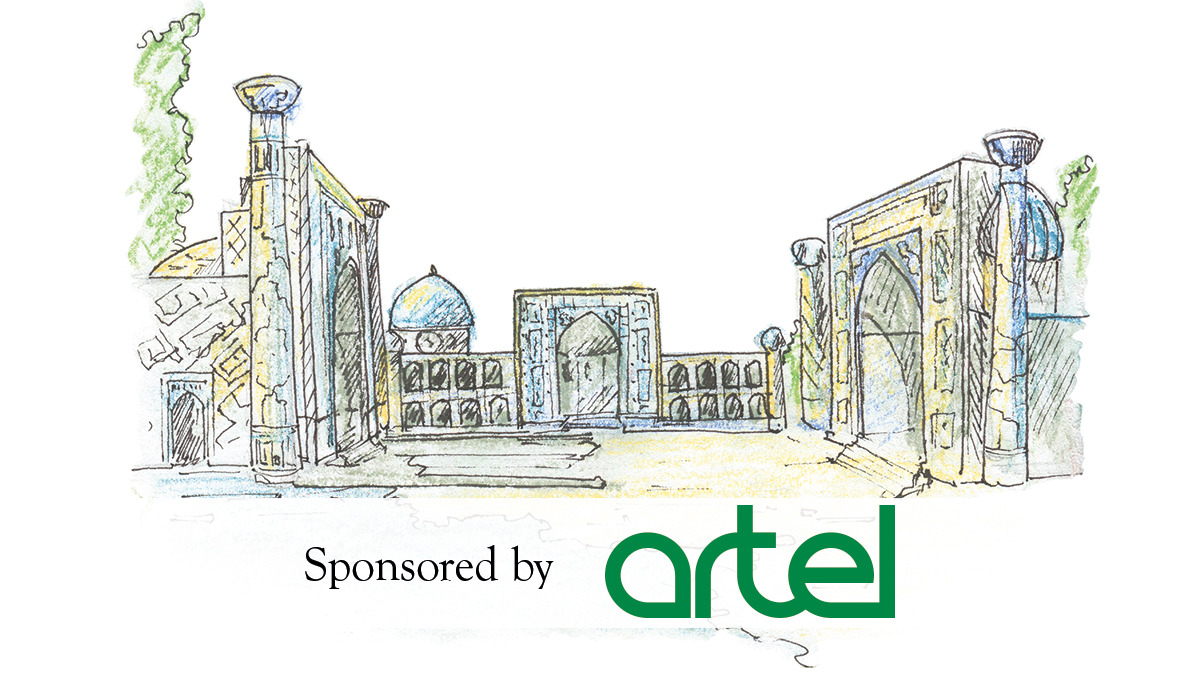The Silk Road – the mystical trading route of folklore. Uzbekistan, its heart – a fertile purveyor of gold, spices and fruit to the tables of Europe. The cities of Samarkand, Khiva and Bukhara – blue dome crossroads of cultures, melting pots of nationalities and hubs of frenetic trade.
The legacy earned by centuries of hagglers has been repressed for decades. The country tumbled out of Soviet shackles into self-imposed isolationism. A brief flirtation with capitalism was unpopular; borders closed and the economy turned inwards.
‘Uzbekistan is making up for lost time and retaking its place as a player in global production’
Yet since 2016, Uzbekistan has been tearing down the walls it had built. A new government is hungry to change the status quo. Ambitious reforms are taking place in every sector, bureaucracy is being shredded and international guests are welcomed to expensive conferences with fanfare.
Notably, currency restrictions have been repealed. There is no more furtive dollar exchange at the vegetable market. Consumers hungry for western brands can buy global goods, and Uzbek goods can compete on international markets.
Uzbekistan is making up for lost time and retaking its place as a player in global production.
Manufacturing unleashed
Ironically for the centre of the ‘Silk Road’, the greatest transformation has been in the cotton industry. A decade ago, millions of unpaid students and teachers were shepherded to the cotton fields to feed a state controlled economy. This turned out to be a little distasteful to westerners in H&M.
And yet in the past five years the story has reversed. This ritualised forced labour is outlawed, quota systems have been removed – and blanket bans on Uzbek cotton are lifting worldwide
Uzbekistan is now importing cotton. A booming textile processing industry churns out reams of fabric to clothe the globe. Local companies such as BCT Denim are pioneering sustainable fabrics. International investors such as US’s Silverleafe see a chance to modernise the developing industry.
The geographical strength and an ambitious population do not leave other industries far behind. Products from Artel, the region’s largest home appliance manufacturer, are now a common sight in Central Asian homes. A growing middle class is meeting local innovation: the company exported more than $130m last year, five times that of 2017.
Established international brands are queuing up to tap into the country’s technological foundations. Domestic companies are hungry for expertise and eager for collaboration. Investors see opportunity in the dynamic human capital and the state’s pro-business attitude. The growth in manufacturing is only just beginning.
A global fruit-bowl
And what of the region’s fresh produce? In a Tashkent market the fruit is piled in colourful symmetry. Any self-respecting Uzbek table is not complete without an apple carved like a swan. And they are – everyone is told – the sweetest in the world.
Now the world can taste them too. Spurred by efficiency and investment, agricultural yields are rapidly increasing and bound for abroad. You can now buy the country’s cherries in South Korea, garlic in the US and melons in British supermarkets.
In a world struggling with supply chains and closing borders, there is one country champing at the bit to fill the gap. In post-Brexit Britain, Uzbekistan became the first country to gain preferential GSP+ status on imports – a sign of intention to tap into this momentum.
Uzbekistan is retaking its rightful place in history. After a ‘dark age’ of Uzbek exports, the country is once again becoming a regional force of production. Look out for more Uzbek success; since the 2017 reforms that unleashed export potential to the world, the country isn’t looking back.
This article is free to read
To unlock more articles, subscribe to get 3 months of unlimited access for just $5






Comments
Join the debate for just $5 for 3 months
Be part of the conversation with other Spectator readers by getting your first three months for $5.
UNLOCK ACCESS Just $5 for 3 monthsAlready a subscriber? Log in